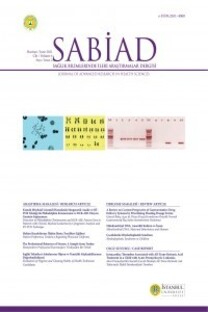Erkek Çocuklarının Sünneti: Tıbbi, Sosyokültürel ve Etik Açıdan Değerlendirilmesi
Erkek çocuklarında terapötik olmayan sünnet uygulamasının gerekliliği konusunda tıbbi ve etik açıdan bir fikir birliğine varılmış değildir. Tıbbi olarak, idrar yolu enfeksiyon sıklığını ve HIV bulaş ihtimalini azaltması gibi potansiyel faydaları mevcuttur. Öte yandan bu işlem çocuğun vücut bütünlüğünü bozmaktadır ve kanama, ağrı, operasyon sonrası enfeksiyon ve yetersiz miktarda cildin alınması gibi komplikasyonları da mevcuttur. Ancak ameliyat tıbbi standartlara uygun yapılırsa komplikasyon ihtimali düşüktür. Sünnetin etik boyutunu tartışırken sorulması gereken en önemli soru ‘Çocuğa en faydalı olan nedir?’ sorusudur. Bu soruyu cevaplandırabilmek için sünnetin tıbbi, kültürel ve psikolojik boyutlarının tamamı ele alınmalıdır. Çünkü erkek çocuklarının sünneti özellikle Müslüman ve Yahudi toplumlarda sosyo-kültürel hayatın önemli bir parçasıdır. Bu yüzden çocuğun topluma entegre olup o çevrede sosyalleşmesi gerekir. Tıbbi faydalarının zararlarına oranla üstün veya düşük olup olmadığı henüz bilimsel bir gerçek halini almadığı için, ailelerin çocuklarını kendi sosyokültürel ve dini inanışlarına göre yetiştirme hakkı ve çocukların da bulunduğu toplumun sosyal anlamda bir üyesi olması hakkı ellerinden alınmamalıdır.
Anahtar Kelimeler:
Erkek Sünneti, Tıbbi Etik, Sosyal Entegrasyon
Non-Therapeutic Circumcision of Boys: Medical, Sociocultural and Ethical View
There is no medical or ethical consensus over the necessity and the ethical statue of nontherapeutic circumcision of boys. From the medical aspect, there are some potential medical benefits like decreased UTI contracture and Human Immunodeficiency Virus (HIV). transmission rates. However, it is an intervention to the child’s bodily integrity and has some surgical complications like bleeding, pain, postoperative infection and inadequate skin removal. Complication rates are low when the surgery is done according to medical standards. When considering the ethical aspects of circumcision, the most important question to be asked is ‘What is the best interest of the child?’ In order to answer this question, all medical, cultural and psychosocial aspects of the circumcision need to be evaluated. It is an important part of sociocultural life especially in Islamic and Jewish societies. Therefore, it is necessary for the child to be integrated to society and to socialize in that environment. Since it is not a fact whether the medical benefits outweigh the risk or vice versa, the right of the parents to raise a child according to their sociocultural and religious beliefs and the right of the child to be a part of the society should not be eliminated.
Keywords:
Male Circumcision, Medical Ethics, Social Integration,
___
- 1. Merkel R, Putzke H. After Cologne: male circumcision and the law. Parental right, religious liberty or criminal assault? J Med Ethics 2013;39(7).:444-9.
- 2. Krill AJ, Palmer LS, Palmer JS. Complications of circumcision. Scientific World Journal 2011;11(2):2458-68.
- 3. Brady MT. Newborn Male Circumcision with Parental Consent, as Stated in the AAP Circumcision Policy Statement, Is Both Legal and Ethical. J Law Med Ethics 2016;44(2):256- 62.
- 4. Weiss HA, Larke N, Halperin D, Schenker I. Complications of circumcision in male neonates, infants and children: a systematic review. BMC Urol 2010;16(10):2.
- 5. Jones DA. Infant Male Circumcision: A Catholic Theological and Bioethical Analysis. Linacre Q 2018;85(1):49-62.
- 6. İlkılıç İ. Erkek çocuk sünnetinin etik açıdan değerlendirilmesi (Ethical evaluation of circumcision of boys).. Türkiye Klinikleri J Urology-Special Topics 2018;11(1): 49-55.
- 7. El-Beyhaki ABH. Es-Sünenü’l-kübra. 8th ed. Beirut: M. Abdülkādir Atâ; 1994.p.324-6.
- 8. Svoboda JS. Nontherapeutic Circumcision of Minors as an Ethically Problematic Form of Iatrogenic Injury. AMA J Ethics 2017;19(8):815- 24.
- 9. Bronselaer GA, Schober JM, Meyer-Bahlburg HF, T’Sjoen G, Vlietinck R, Hoebeke PB. Male circumcision decreases penile sensitivity as measured in a large cohort. BJU Int 2013;111(5):820-7.
- 10. Krieger JN, Mehta SD, Bailey RC, AGot K, Ndinya-Achola OJ, Parker C, et al. Adult Male Circumcision: Effects on Sexual Function and Sexual Satisfaction in Kisumu, Kenya. Journal of Sexual Medicine 2008;5(11):2610-22.
- 11. Rodriguez V, Titapiwatanakun R, Moir C, Schmidt KA, Pruthi RK. To circumcise or not to circumcise? Circumcision in patients with bleeding disorders. Haemophilia 2010;16(2): 272–6.
- 12. American Academy of Pediatrics Task Force on Circumcision Technical Report. Circumcision policy statement. Pediatrics 2012;130(3):e756-e85.
- 13. Morris BJ, Wiswell TE. Circumcision and lifetime risk of urinary tract infection: a systematic review and meta-analysis. J Urol 2013;189(6):2118-24.
- 14. Alkhenizan A, Elabd K. Non-therapeutic infant male circumcision. Evidence, ethics, and international law perspectives. Saudi Med J 2016;37(9):941-7.
- 15. Hakenberg OW, Dräger DL, Erbersdobler A, Naumann CM, Jünemann KP, Protzel C. The Diagnosis and Treatment of Penile Cancer. Dtsch Arztebl Int 2018;115(39):646-52.
- 16. Mcmath A. Infant male circumcision and the autonomy of the child: two ethical questions. J Med Ethics 2015;41(8):687-90.
- 17. Morris BJ, Kennedy SE, Wodak AD, Mindel A, Golovsky D, Schrieber L et al. Early infant male circumcision: Systematic review, risk-benefit analysis, and progress in policy. World J Clin Pediatr 2017;6(1):89-102.
- 18. Darby RJ. The child’s right to an open future: is the principle applicable to non-therapeutic circumcision? J Med Ethics 2013;39(7):463-8.
- 19. Svoboda JS, Adler PW, Van Howe RS. Circumcision Is Unethical and Unlawful. J Law Med Ethics 2016;44(2):263–82.
- 20. Tobian AA, Gray RH. The medical benefits of male circumcision. JAMA 2011;306(13):1479- 80.
- Yayın Aralığı: Yılda 3 Sayı
- Başlangıç: 2018
- Yayıncı: İstanbul Üniversitesi
Sayıdaki Diğer Makaleler
Spinal Musküler Atrofi (SMA) ve Tıbbi Beslenme Tedavisi
Erkek Çocuklarının Sünneti: Tıbbi, Sosyokültürel ve Etik Açıdan Değerlendirilmesi
Seval ÖZEN, Hatice UYGUN, Songül ÇETİN, Cüret ALEV, Sadık AKGÜN, İbrahim BUCAK, Mehmet TURĞUT
Çocuk Hastalarda Kullanılan Kuron Restorasyonlar
Ömer Faruk DÜZENLİ, Beyza GÖNCÜ, Emrah YÜCESAN, Harika SALEPÇİOĞLU KAYA, Yeliz Emine ERSOY, Adem AKÇAKAYA
